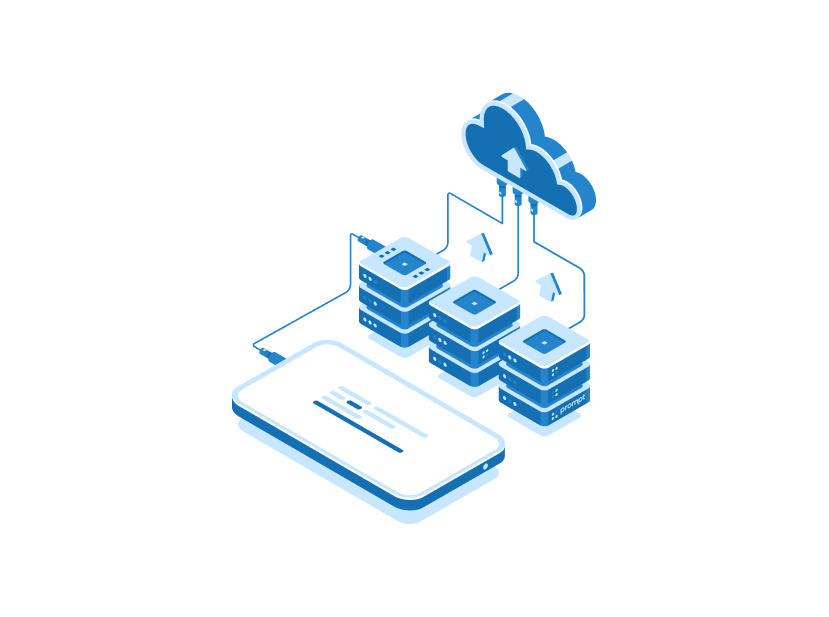Today, imagination has the power to become real, and all this is possible through the Internet of Things. It has empowered humankind with the ability to convert vision, thoughts and imagination into reality. From smartwatch to smart Tv, smart building to the smart town, every impossible and futuristic dream is becoming part of day-to-day life. So, it is pretty clear that every connected product leads to almost endless possibilities, from enhancing products to creating synergies that almost seemed impossible in the past.
Businesses manufacturing smart products or using IoT to streamline efficiencies are dependent on one thing: data. Data plays a critical role in making the whole IoT system effective and efficient. The data points collected from connected devices communicating to one another create a tapestry of insights for organizations that hold the skill to efficiently and precisely curate and analyze them.
Let’s know about things more closely.
Smarter Products
Usually, there is a lot of guesswork with smart product development. Suppose we summarise the current tech status, then yes. In that case, we are still in the primary stage of IoT, especially in selecting the data connected product development though we are surrounded by an ‘n’ number of IoT connected devices and products. However, manufacturers are learning that smart products offer tremendous insight into which features are used the most, which are sometimes utilized and sometimes not.
No doubt, there is a wealth of information available on smart product relationships. Let us understand this by taking an example of a connected kitchen. In a connected kitchen, multiple devices interact with one another. The data collected shows the quantitative impact that connected products cause on each other, and in some cases, it even identifies relationships that have not been clear at first glance.
IoT data can inform manufacturers when something operates incorrectly, and which factor is behind the emergence of the issues.
For instance, it can check if it is an isolated incident, or the issue arises whenever specific factors leading to the problem occur? This information can highlight anything from fundamental performance problems to possible safety issues. The data permits manufacturers to analyze it and enable them to make intelligent updates to the product or develop a new one, or in some cases, it suggests discontinuing the product altogether.
Safer, More Efficient Production
To utilize the values provided by IoT data to the next meta-level, it is essential to check how connectivity can help in the development of smart products.
The Industrial Internet of Things, i.e. IIoT, is the next new thing of the IoT revolution. In the manufacturing sector, connected devices offer a wealth of information related to certain aspects of smart product development.
As discussed in the smart kitchen example, data from connected devices can inform managers about production delays and the possible reasons for this delay.
Suppose there may be lags from one stage of the manufacturing process to the next, and that may not be detected without the connected data.
Sensors attached to the devices also warn about the part of machinery that needs to be repaired or is about to fail altogether. This gives a manager the ability to address the issues before the fall down happens and prevents the possible production slowdown or failure.
IIoT data can also help in discovering possible manufacturing safety hazards, like dangerous interactions between connected machinery. Besides this, smart wearables can observe the health status of the employees working in the plant. It monitors the vital signs, which can signal possible health issues. By integrating past and present data, it is possible to improve the overall safety of the plant, which ultimately results in better results.

Thus it is clear that either for uniform operation or to ensure the safest possible work environment, IIoT data offers insights into managing a continuous flow of production, which ultimately plays a vital role in delivering a product to market and ensures fulfilment post-launch demand.
Getting Data Where It Needs to Be
Gathering data and churning valuable information from it is a significant step toward market differentiation. The connected devices offer extensive data, and it is crucial to segregate valuable data from the flooding data.
Now, its time to know the three things that every organization needs to do:
- Crush the silos: We are crossing the stage where each department had its own sets of data that never went beyond its four walls, and this whole system is essential as it associates with IoT data. The entire system of IoT data is dependent on how data interacts to produce new insights. Today, innovative product manufacturers who embrace IoT on a micro and macro level are the ones who will shine in the coming future and will benefit the most. They will ensure that appropriate data gets to those who want to use it.
- Share progress updates: When disruptive new insights are available, make sure that stakeholders know them and demonstrate why insights are vital to individual departments as well as organizations. This whole process, which involves sharing information, ensures that everyone is aware of the overall status of the product and its current development stage.
- Avoid oversharing: It is undoubtedly imperative to enhance data sightlines, but it should not overload stakeholders. There is an immense flow of data that might eat up time in making helpful reports, but it would lead to a delay in the project and might hit critical product development.
Wrap up:
IoT holds a great future; in fact, we can say that IoT is the future. Coming decades will be transformative for innovative product manufacturers who comprehend the art of IoT and its data analysis. These future-oriented companies will offer products featuring more personalized, powerful, and intuitive services than ever before. These IoT-based organizations will create a new digital ecosystem where everything will be interconnected and inform each other. So, be ready to see a world where devices communicate and offer the best possible assistance and solutions.

